JIM STERANKO is a powerhouse of graphics innovation whose legacy is continually reflected today.
One of his most iconic works is the cover to Nick Fury, Agent of S.H.I.E.L.D #4 (September, 1968).
This has become a classic work of Pop Art. It came from varied inspirations, and continually inspires many tributes.
Today, we look at what had inspired him and what he has inspired.
Chapter quick links:
• INFLUENCES:
Pop Art, James Bond, Movie Posters, Bob Peak
• The AGENT OF SHIELD Cover,
and its disciples
• STERANKO At Marvel
• HIS INFLUENCE
• CAPTAIN AMERICA 2: THE WINTER SOLDIER
Steranko looked for inspiration in all other media to expand the comics palette.
He was responding to the latest advances made in the arts, film, magazines, and graphics.
From the fine arts scene he admired Pop Art, Op Art, and collage.
One certain influence on his Nick Fury work -and the entire era- is the James Bond films, with their stylish Mod opening titles (Maurice Binder), gargantuan layered sets (Ken Adam), and male power fantasies.
Maurice Binder, GOLDFINGER main titles, 1964.
Maurice Binder, YOU ONLY LIVE TWICE main titles, 1967.
He favored the bold modernist graphics of film posters.
VERTIGO Main Titles, by Saul Bass (1957)
All of these influences were also reflected in the magazine and poster art of the celebrated illustrator Bob Peak.
The AGENT OF S.H.I.E.L.D. Cover
And Its Continuous Influence
Distill this Molotov cocktail, shaken not stirred, and you get a unique Pop Art masterpiece.
Steranko's cover has been homaged many times by artists since.
1 - Dave Johnson (2000) / John Cassaday (2000)
2 - Danny Miki (2005) / Greg Horn (2007)
3 - Adi Granov (2007) / Obama support (2008)
4 - Tomm Coker (2009) / Mariano Laclaustra (2017)
STERANKO at Marvel
The prime visual force that defined Marvel Comics in the 1960s was Jack Kirby. (And Steve Ditko, to less degree, with Spider-Man and Dr. Strange).
But the prime force who redefined Marvel Comics was Jim Steranko. He was Stan Lee and Jack Kirby combined and amplified.
Because his stylistic innovations are too numerous for anything outside of a coffee table book, here are some varied highlights.
More than any other comics artist in the '60s, Steranko thought like a cinematographer and a graphic designer at the same time.
With the smash success of the campy Batman TV series (1966), the media described the show as a visual expression of Pop Art. Both Marvel and DC Comics tried to cash in on this cache, but no one came close to combining the potential of graphic comics with fine arts like Steranko did.
In the '40s, Jack Kirby had created the first double-page spreads with his Captain America comics. Steranko pushed that to new extremes with a modernist design sense.
His ambition was so boundless that he actually had a double-double page spread, opening to a vista of four pages!
When Steranko stepped in for two issues of The X-Men, he redesigned their logo while he was at it, creating this iconic masthead.
His cover for a Hulk annual has also been homaged many times by later artists.
Steranko is most known for his runs on Nick Fury and then Captain America. Because of him, these characters have become intertwined since the '60s.
During his issues, he created Madame Hydra.
There was a rule at Marvel Comics: "Bucky has died, and he can't come back." Steranko was the first to play with the idea of what if the 1940s sidekick did, in this celebrated hallucinatory sequence with Dali influence (1969). This planted the seed for The Winter Soldier three decades later.
Although he only worked in comics for a couple years, Steranko opened up wide possibilities that every creator has been exploring ever since.
The television Westerns of the '50s and '60s were deconstructed in the early '70s by the final Western, an Eastern called Kung Fu (1972-1975), which challenged manifest destiny and colonialist hegemony with the heterogenous outlooks of those marginalized by it, using the hybrid perspective of Kwai Chang Caine. The Nick Fury, Agent Of S.H.I.E.L.D. comic, a product of the '60s spy boom, was likewise radically inverted and reconstructed by its direct heir, Master Of Kung Fu (1974).
The celebrated run of artists -Jim Starlin, Paul Gulacy, Mike Zeck, and Gene Day- used Steranko's techniques of cineramic scope and intense graphic design, while Doug Moench's scripts replaced the gung-ho patriot (or imperialism avatar, depending) with the introspective and spiritually conflicted hero Shang Chi, who called into question the ties of violence, honor, tradition, loyalty, and dogma that bound his soul. At their best, Fury was an honorable soldier while Shang was an ethical philosopher.✱
Paul Gulacy's art synthesized Bob Peak, Hitchcock, and Steranko.
See bigger here.
Gene Day's art blended Will Eisner and Steranko.
His double-paged spreads were more ambitious and hyper-detailed than anyone, and he had a direct influence on Moore, Bissette, and Totleben's revolutionary revisal of Swamp Thing directly after. (The first Alan Moore issue of ST was illustrated by his similar brother, Dan Day.)
See bigger here
See bigger here
✭ Gene Day's criminally-overlooked art (MOKF #101-120) was finally reissued and remastered after three decades of legal stasis within the Shang-Chi: Master Of Kung Fu Omnibus, VOlume #4 (2017).
Without this chain of iconoclasts, J.H. Williams III's legendary art for Batwoman would have been impossible.
See bigger here
See bigger here
✱
[Nick Fury was further deconstructed and critiqued as The Comedian in Alan Moore and Dave Gibbons' WATCHMEN (1986).]
Will Eisner created the CITIZEN KANE of comics with his series The Spirit (1940-1952). His use of noir lighting, skewed perspective, nuanced dramedy, and dramatic splash pages and much more set the standard for all mature innovations to follow.
In 1976, Steranko's hardboiled graphic novel CHANDLER: RED TIDE refined film noir into full-contrast black and white.
The combination of Eisner and Steranko's works is reflected in Frank Miller's SIN CITY series.
George Lucas called in Steranko for design art for his homage to 1930s movie serials, who then added George's bomber jacket into the mix.
Steranko adapted the SciFi movie OUTLAND (1981), now a cult classic, for Heavy Metal magazine by distilling it into a cutting-edge series of double-page panoramas.
In his early years, Steranko was an escape artist in the mode of Houdini. This inspired Jack Kirby to create this New God for DC Comics.
For his book "The Amazing Adventures of Kavalier And Clay", author Michael Chabon combined Will Eisner, Jack Kirby, and Jim Steranko into the protagonist artist and his character, The Escapist. The acclaimed novel won the Pulitzer Prize in 2001.
When Captain America (literally) returned from deep freeze in the '60s, his acclimation to the modern world became irrevocably intertwined with Steranko's innovations and amplifications in the Nick Fury and Captain America books.
In the cinematic version of the same return, this is why Steranko is so strongly homaged by the iMax poster and the film's end credit design.
© Tym Stevens
See Also:
▶ Four Color Films, THE Comic Movie Review Site!
• BEST COMICS: 2012
• JOHN BARRY: The Influence Of The JAMES BOND Sound On Pop Music, with 2 Music Players
• 20 Most Badass JAMES BOND Women!
• THE PRISONER: Its Influence On Music, TV, and Comics, with Music Player!
• THE CANON 1: 50 Books That Created Modern Culture, with Music Player
• THE CANON 2: 50 More Books That Created Modern Pop Culture, with Music Player
• THE CANON 3: 50 Recent Books That Created Modern Culture, with Music Player
• The Real History of Rock and Soul!: A Music Player Checklist




























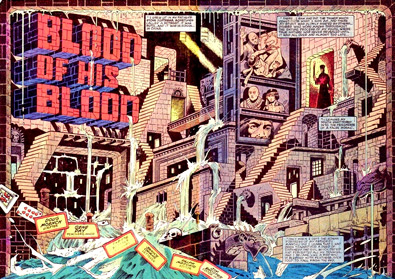






























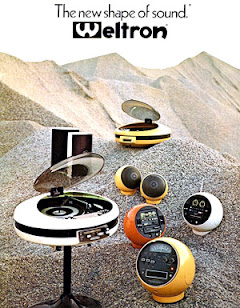



















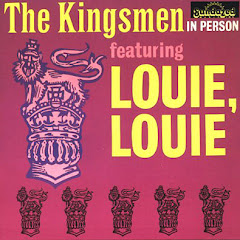












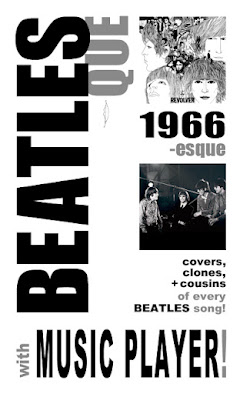































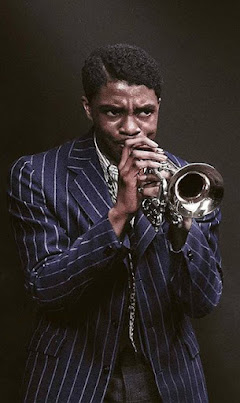










































No comments:
Post a Comment